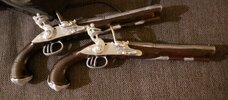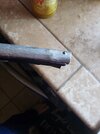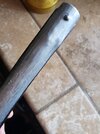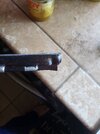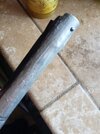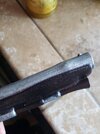Molding prints- I have found many articles about hot knife sculpting (soldering iron) but little on low heat remolding and forming. If you have anything on this topic, please share.
I had printed some flintlocks for pistols but they heat warped (lifted) during the printing.
I used a curling iron and shielded it with some tissue paper. I would like to try a silicone or teflon sheet in the future, like the ones used in heatpress operations for shirts getting imaged.
I heated just the one horizontal bar across the back of the piece and gently applied pressure until it began to move. I removed the heat and held the new curve until it cooled again.
The area that was heated was visually warped in the shape of the iron and could not be recommended for future use. The front of my print looks great and is now the correct shape for mounting.
I would guess that a heat gun at very low temperature would be much safer and less damaging.
Any input on this would be appreciated.
I had printed some flintlocks for pistols but they heat warped (lifted) during the printing.
I used a curling iron and shielded it with some tissue paper. I would like to try a silicone or teflon sheet in the future, like the ones used in heatpress operations for shirts getting imaged.
I heated just the one horizontal bar across the back of the piece and gently applied pressure until it began to move. I removed the heat and held the new curve until it cooled again.
The area that was heated was visually warped in the shape of the iron and could not be recommended for future use. The front of my print looks great and is now the correct shape for mounting.
I would guess that a heat gun at very low temperature would be much safer and less damaging.
Any input on this would be appreciated.

